Space

Mars may have been a wetter place than previously thought, according to research on simulated Martian meteorites conducted, in part, at the US Department of Energy's Lawrence Berkeley National Laboratory. »
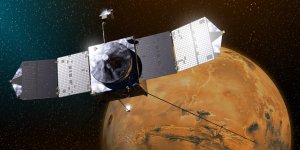
NASA's MAVEN spacecraft performed a previously unscheduled maneuver this week to avoid a collision in the near future with Mars' moon Phobos. »
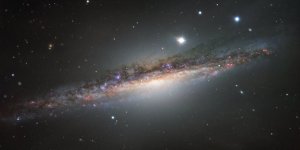
This colourful stripe of stars, gas, and dust is actually a spiral galaxy named NGC 1055. Captured here by ESO’s Very Large Telescope (VLT), this big galaxy is thought to be up to 15 percent larger in diameter than the Milky Way. »

Leading biologists estimate nearly half of the planet’s species could be extinct by the end of the century unless urgent action is taken. »

NASA's Spitzer Space Telescope has revealed the first known system of seven Earth-size planets around a single star. »

NASA's Spitzer Space Telescope revealed the first known system of seven Earth-size planets around a single star. »
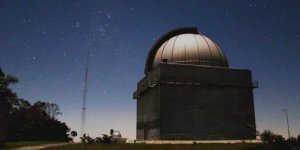
A Russian telescope being set up at the Pico dos Dias Observatory in Brazópolis, Minas Gerais, is due to start operating later this month. »

Mars is covered in gullies and dry riverbeds, but scientists have always been baffled as to how water could have existed on the freezing world. »

Astronomers have located the habitable zone, the region where water could exist on the surface of a planet, on the Wolf 1061, a planetary system that is 14 light years away from our Earth. »

From the most powerful telescope orbiting Mars comes a new view of Earth and its moon, showing continent-size detail on the planet and the relative size of the moon. »

Clouds on the massive exoplanet HAT-P-7b could be made of rubies and sapphires, new research suggests. »

NASA's Cassini spacecraft has sent to Earth its first views of Saturn's atmosphere since beginning the latest phase of its mission. »
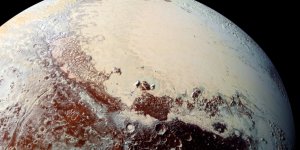
Scientists are offering several new scenarios to explain the formation of Pluto’s frozen heart-shaped feature. »
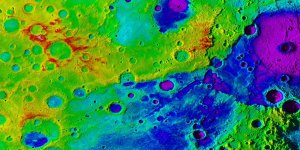
A newly discovered “great valley” in the southern hemisphere of Mercury provides more evidence that the small planet closest to the sun is shrinking. »
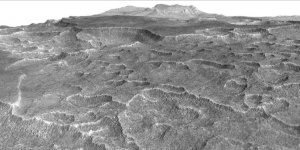
Frozen beneath a region of cracked and pitted plains on Mars lies about as much water as what's in Lake Superior, largest of the Great Lakes, researchers using NASA's Mars Reconnaissance Orbiter have determined. »

As southern winter solstice approaches in the Saturn system, NASA's Cassini spacecraft has been revealing dramatic seasonal changes in the atmospheric temperature and composition of Saturn's largest moon, Titan. »

The moon is a familiar sight in our sky, brightening dark nights and reminding us of space exploration, past and present. But the upcoming supermoon — on Monday, Nov. 14 — will be especially “super” because it’s the closest full moon to Earth since 1948. We won’t see another supermoon like this until 2034. »

Via a NASA-led citizen science project, eight people with no formal training in astrophysics helped discover what could be a fruitful new place to search for planets outside our solar system – a large disk of gas and dust encircling a star known as a circumstellar disk. »

Laser-zapping of a globular, golf-ball-size object on Mars by NASA's Curiosity rover confirms that it is an iron-nickel meteorite fallen from the Red Planet's sky. »

A rocky extrasolar planet with a mass similar to Earth’s was recently detected around Proxima Centauri, the nearest star to our sun. This planet, called Proxima b, is in an orbit that would allow it to have liquid water on its surface, thus raising the question of its habitability. »

NASA's Voyager 2 spacecraft flew by Uranus 30 years ago, but researchers are still making discoveries from the data it gathered then. A new study led by University of Idaho researchers suggests there could be two tiny, previously undiscovered moonlets orbiting near two of the planet’s rings. »

Global dust storms on Mars could soon become more predictable -- which would be a boon for future astronauts there -- if the next one follows a pattern suggested by those in the past. »

NASA's Hubble Space Telescope has detected superhot blobs of gas, each twice as massive as the planet Mars, being ejected near a dying star. »

Astronomers using NASA's Hubble Space Telescope have imaged what may be water vapor plumes erupting off the surface of Jupiter's moon Europa. This finding bolsters other Hubble observations suggesting the icy moon erupts with high altitude water vapor plumes. »

Over time, nutrients such as nitrogen affect important marsh bacteria. »

This image, taken by the NASA/ESA Hubble Space Telescope, shows the colorful "last hurrah" of a star like our sun. »

Astronomers using NASA's Hubble Space Telescope, and a trick of nature, have confirmed the existence of a planet orbiting two stars in the system OGLE-2007-BLG-349, located 8,000 light-years away towards the center of our galaxy. »

NASA’s Hubble Space Telescope has captured one of the sharpest, most detailed observations of a comet breaking apart, which occurred 67 million miles from Earth. »
Lakes and snowmelt-fed streams on Mars formed much later than previously thought possible, according to new findings using data primarily from NASA's Mars Reconnaissance Orbiter. »
The layered geologic past of Mars is revealed in stunning detail in new color images returned by NASA's Curiosity Mars rover, which is currently exploring the "Murray Buttes" region of lower Mount Sharp. »
Juno spacecraft has sent back the first-ever images of Jupiter's north pole, taken during the spacecraft's first flyby of the planet with its instruments switched on. »
For years, astronomers have puzzled over a massive star lodged deep in the Milky Way that shows conflicting signs of being extremely old and extremely young. »
Coastal ecosystems worldwide are feeling the heat of climate change. In the Southeastern U.S., salt marshes have endured massive grass die-offs as a result of intense drought, which can affect everything from fisheries to water quality. »
A newly discovered, roughly Earth-sized planet orbiting our nearest neighboring star might be habitable, according to a team of astronomers using the European Southern Observatory's 3.6-meter telescope at La Silla, Chile. »
NASA's Juno mission successfully executed its first of 36 orbital flybys of Jupiter today. The time of closest approach with the gas-giant world was 6:44 a.m. PDT when Juno passed about 2,600 miles (4,200 kilometers) above Jupiter's swirling clouds. »